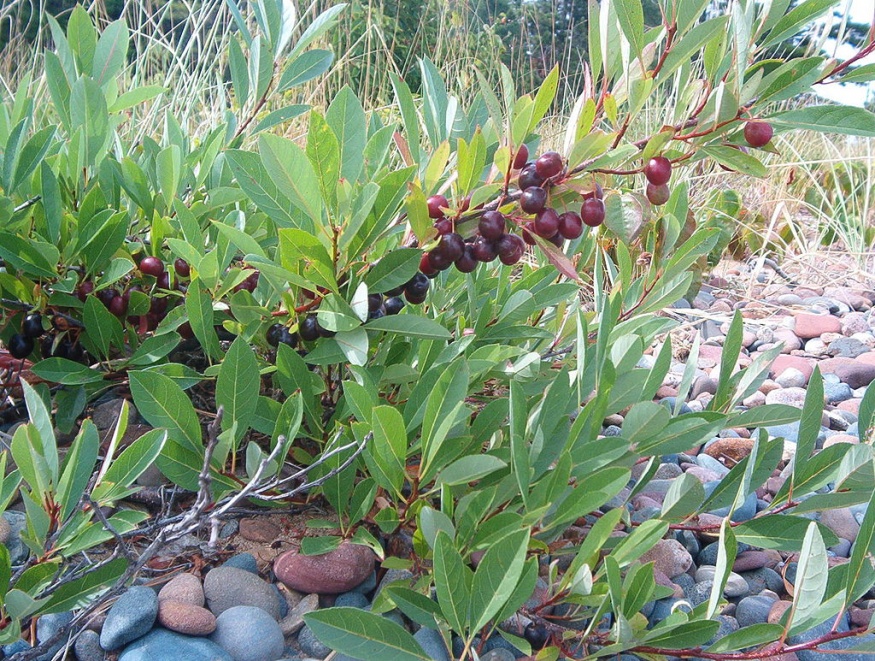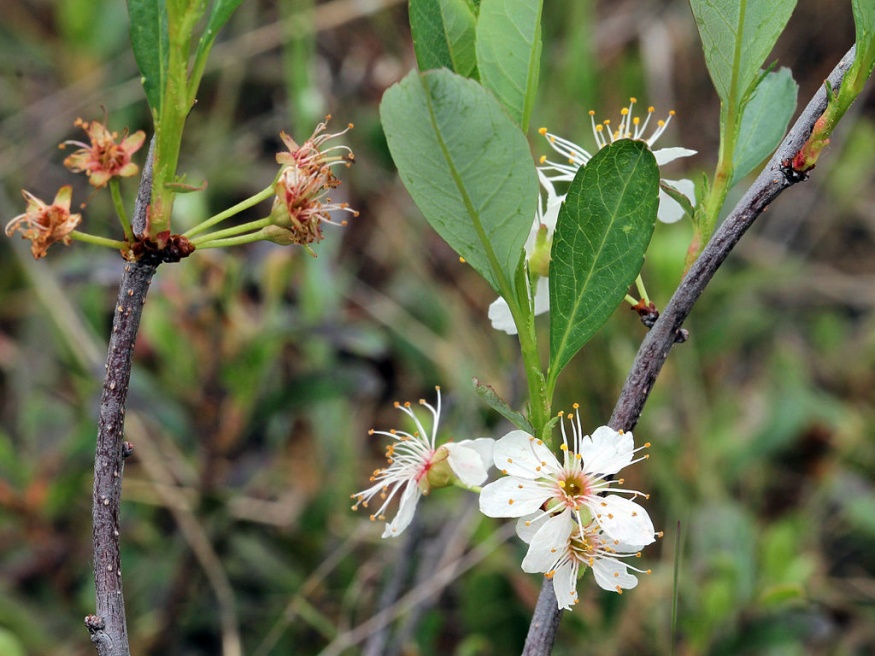Sand Cherry

Family: Rosaceae Native to: Eastern North America, Interior North America
Hardy to zone: 3
Eco benefits: attracts pollinators, erosion control, attracts birds, improves soil
Natural habitat: prairies, barren or disturbed ground, rocky slopes, dunes, forest edge
Shapes: round, multi-stemmed, clump, prostrate
Height: 2-9ft
width: 4-6ft
Unique attractions: flowers, fruit
Common uses: landscaping, naturalized plantings
Light: full sun, partial shade
Soil: well drained, drought tolerant, dry, sandy
Reproduction type: monoacious
Sand cherry is a bushy to creeping shrub native to northern United States and eastern Canada. Its usually found on dry grassy sites, dunes around the Great Lakes, and sometimes the shrub layer of forests. Sand cherry can grow in a creeping fashion when on dunes or windswept sites as it spreads by Suckering (rhizomes). The flowers and fruit can be an appealing feature as varieties and hybrids of the shrub have subsequently been used in landscaping.

The leaves are dark green, oval-lanceolate or oval in shape with acute tips and finely serrated margins. Showy white 5 petaled flowers appear from April to June and are pollinated by insects. Purplish black fruit follows flowering and ripens from July to September. The Fruit is edible and can be used for pies and jams. Seeds are produced every 2 to 3 years of age and are dispersed by birds and small mammals.

Sand cherry has a number of ecological benefits throughout its range in the wild. Its deep root network has soil building properties, adding chambers of organic matter and encouraging microbial activity. erosion control is another beneficial characteristic as it stabilizes sandy soils from wind and rain. It's low branches provide shelter and food for a variety of birds and small animals including rodents and rabbits which feed on the twigs.
Sand cherry is a popular dwarfing root stock for stone fruit trees (peach, apricot, plums). The popular purple-leaf sand cherry (Prunus × cistena) is a hybrid between Prunus pumila and Prunus cerasifera (cherry plum), a very common purple flowering shrub in landscaping.
References
Fire Effects Information System (FEIS). (n.d.). Prunus pumila. Retrieved from https://www.fs.fed.us/database/feis/plants/shrub/prupum/all.html
MICHIGAN FLORA ONLINE. A. A. Reznicek, E. G. Voss, & B. S. Walters. February 2011. University of Michigan. Web. November 23, 2020. https://michiganflora.net/species.aspx?id=2526
Oregon State University. (n.d.). Prunus besseyi. Retrieved from https://landscapeplants.oregonstate.edu/plants/prunus-besseyi
Wisconsin State Herbarium, UW-Madison. (n.d.). Prunus pumila. Retrieved from http://wisflora.herbarium.wisc.edu/taxa/index.php?taxon=4691